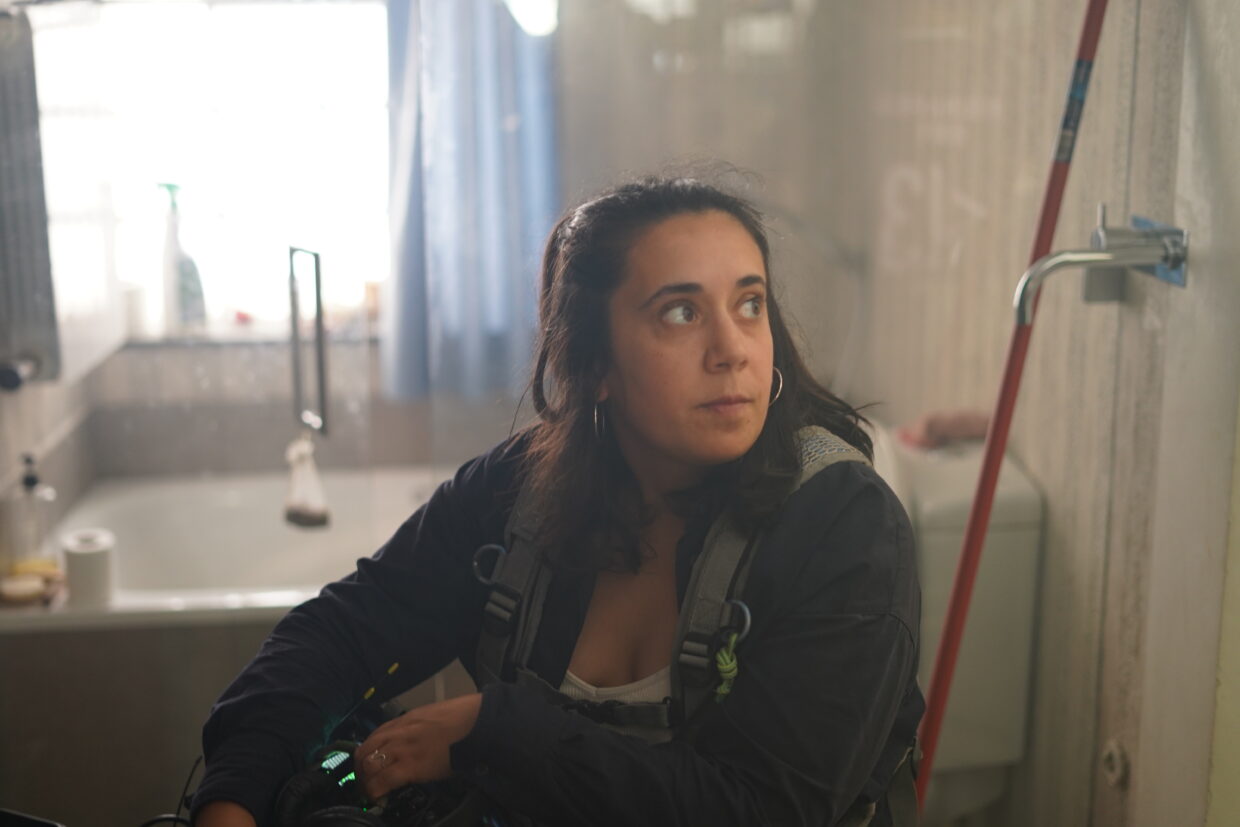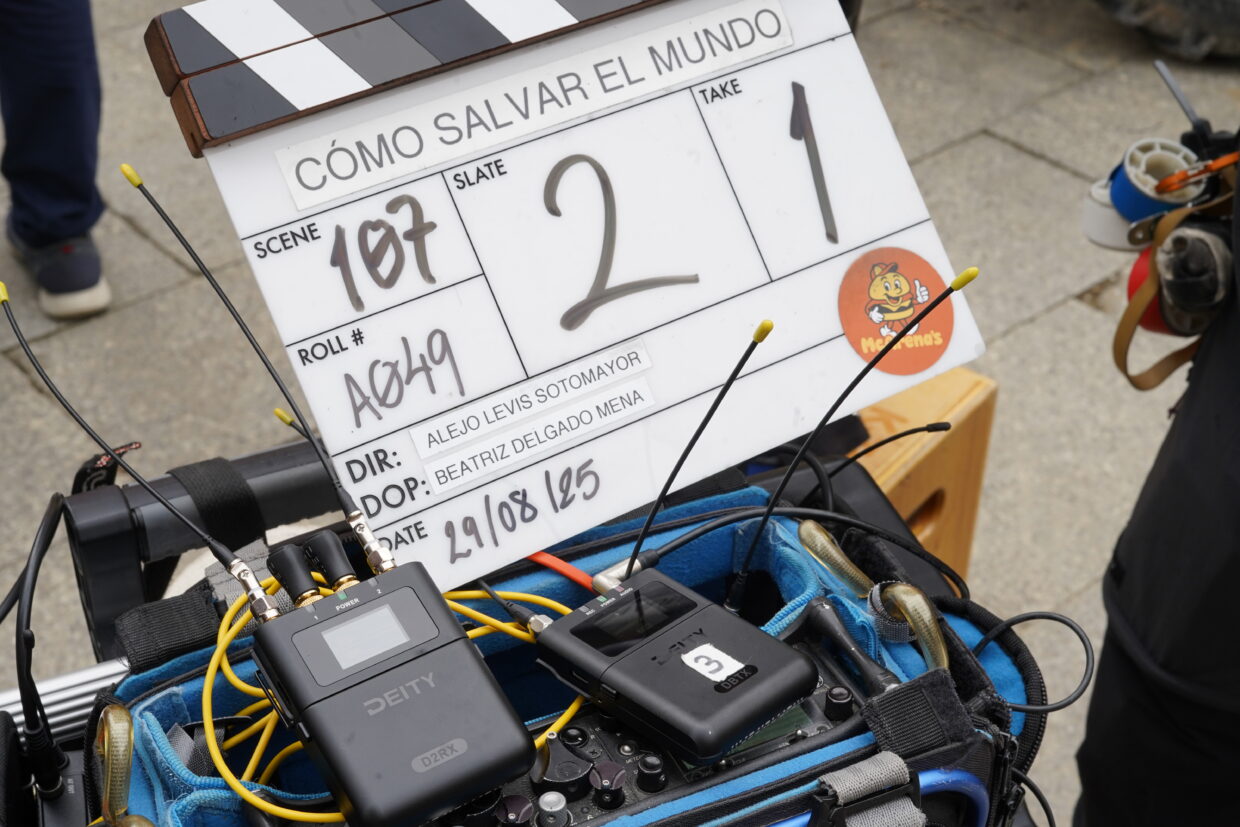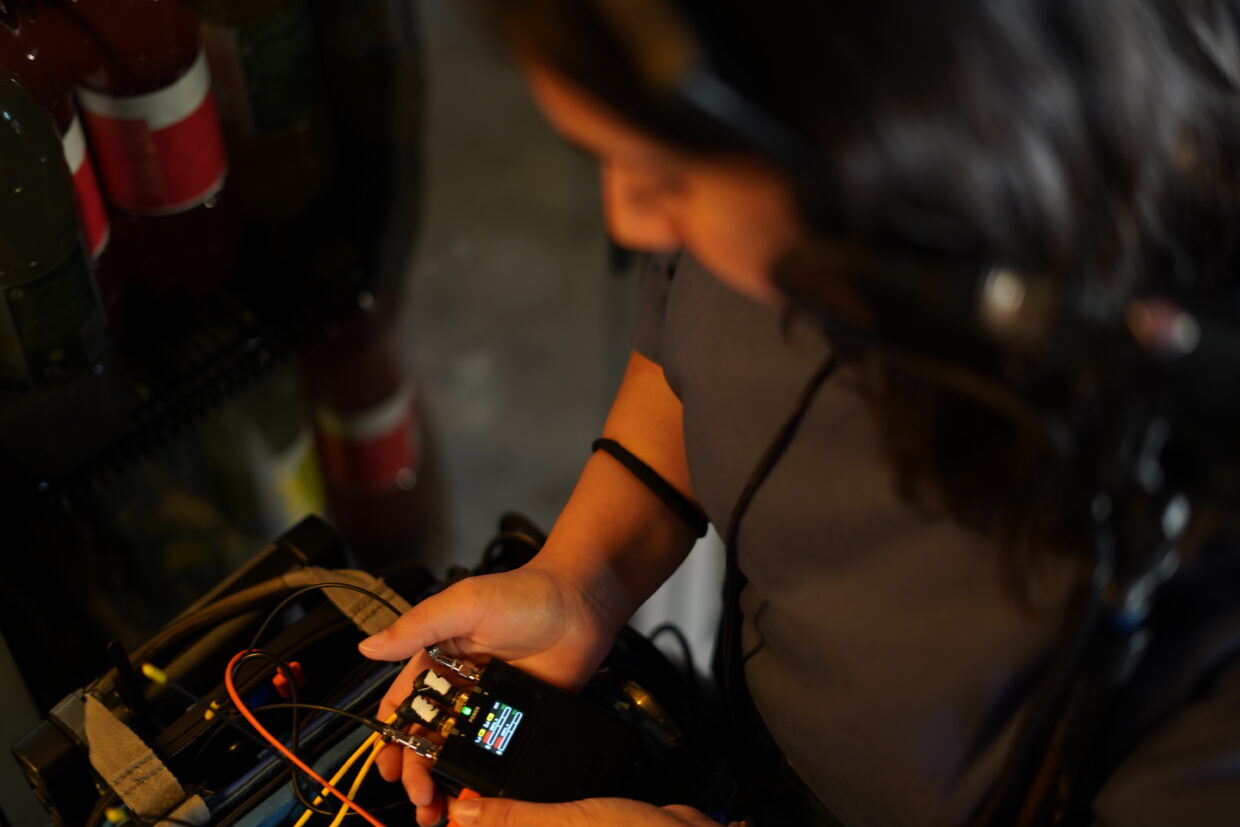Location sound mixer Maitane Carballo has worked on independent films, branded content, and short series throughout her career, but the feature film “Cómo salvar el mundo” (How to Save the World) stands out. Produced by Mundo Cero and directed by Alejo Levis, the shoot threw some serious technical challenges her way, and gave her a chance to really test what her Deity gear could handle.

Familiar Faces, New Challenges
This was Maitane’s third project with Mundo Cero and her second film with director Alejo Levis. Working with a familiar crew always makes things smoother, but this production had some curveballs in store.
“I’ve used Deity products on several projects, but this feature really proved what the gear could do,” Maitane says.
Why THEOS?
Maitane used the Deity THEOS Dual-Channel Digital Wireless System on the shoot, and the internal recording quickly became her favorite feature. In tricky RF environments, having that backup gave her peace of mind.
The Deity app made life easier too. She could scan frequencies, assign channels, check battery levels, and power transmitters on or off, all from her phone.
“It’s a huge time saver on set.”
The app connection could drop when she was far from the actors, but it came right back once she got closer. Not surprising given the distance, and she figures external antennas would help with that (she just hasn’t tested them yet).

The Antenna Problem
One shoot day nearly became a disaster. They were filming right next to massive transmission antennas pumping out all kinds of signals. The RF interference was obvious, and the wireless range took a hit.
But here’s where the internal recording saved her. “I was able to capture clean audio without any interference. I didn’t lose a single take,” Maitane explains. Instead of panicking about dropouts, she could focus on the actual work—the actors and the story.
The Little Things That Matter
THEOS has some practical features that make long days easier. The receiver takes USB-C power, so Maitane can run it off a portable battery or plug it into her main power system. That flexibility matters when you’re ten hours into a shoot.
The build quality surprised her.
“Even though THEOS isn’t a high-end product, the materials feel solid.”
Recording internally at 32-bit float puts it up there with more expensive options, and for the price, she thinks it’s hard to beat.The carrying case gets points too: compact, light, easy to travel with. Perfect for run-and-gun documentary work.
She’s planning to pick up more Deity gear: batteries, antennas, and other accessories to round out her kit.

Fast-Moving Night Scenes
One night scene was particularly brutal; lots of actor movement and almost no time between takes. Maitane prepped carefully: set her levels, synced timecodes beforehand, and made sure the lavs were secure to avoid clothing noise.
“Having the internal record enabled gave me extra confidence,” she says. The app let her adjust things quickly under pressure, which is exactly what you need when there’s no time for do-overs.
The timecode input made post-production easier too. She could feed timecode straight from her system into the mics, making sync a breeze for the editors.
The Bottom Line
Maitane is impressed:
“Knowing I can rely on this gear in complex real-world scenarios is priceless. I’ll keep using it for different projects.”
For her, it comes down to trust. Sound is a massive part of storytelling, and unreliable gear can kill a production. “Deity gives me the confidence to deliver clean, high-quality audio no matter what the set throws at me.”
When you’re dealing with RF interference and tight schedules, having equipment that just works makes all the difference. For Maitane and “Cómo salvar el mundo,” THEOS proved it belongs in a professional kit.